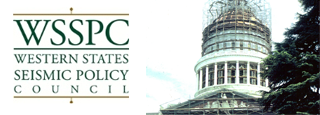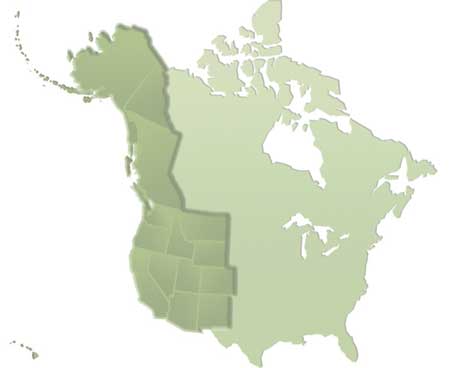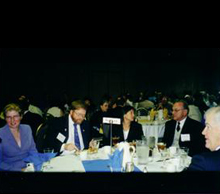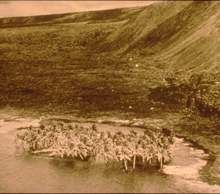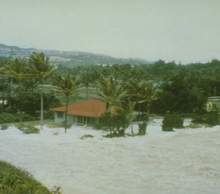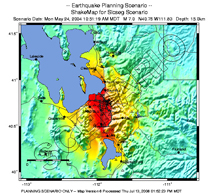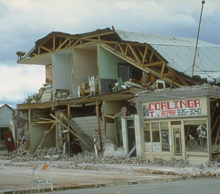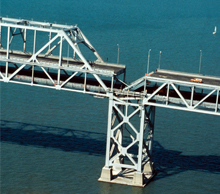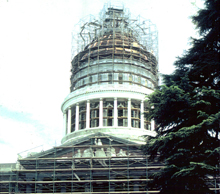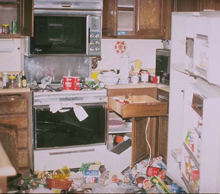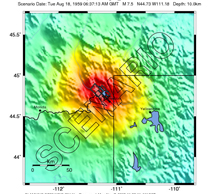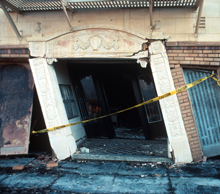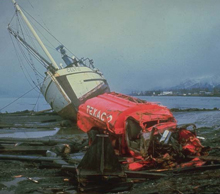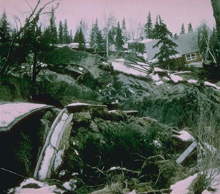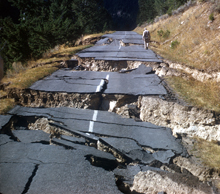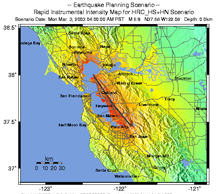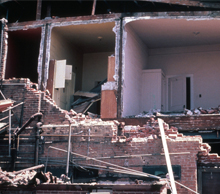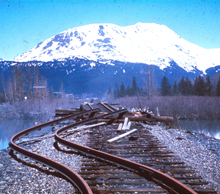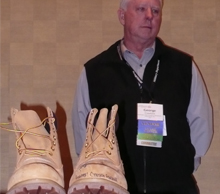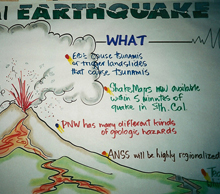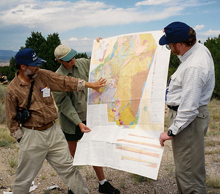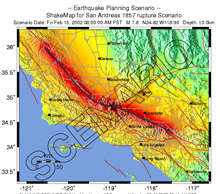Washington Earthquake Hazards Mitigation Legislation
(WA‐1) Growth Management Act: This state law (RCW 36.70A) requires all cities, towns and counties in the state to identify critical areas, and to establish regulations to protect and limit development in those areas. Among the critical areas defined by state law are frequently flooded areas (floodplains, and areas potentially impacted by tsunamis and high tides driven by strong winds) and geologically hazardous areas (those areas susceptible to erosion, landslide, seismic activity, or other geological events such as coalmine hazards, volcanic hazard, mass wasting, debris flows, rock falls, and differential settlement).
Guidance provided to local government states that critical areas protection programs should address a number of issues, including: Protecting members of the public, public resources and facilities from injury, loss of life, or property damage due to landslides and slope failures, erosion, seismic events, volcanic eruptions, or flooding; Maintaining healthy, functioning ecosystems through the protection of unique, fragile, and valuable elements of the environment; Directing activities not dependent on critical areas resources to less ecologically sensitive sites, and mitigating unavoidable impacts to critical areas by regulating alterations in and adjacent to those areas; and Preventing cumulative adverse environmental impacts to frequently flooded areas.
Since 1995, local governments must consider best available science in their identification and protection of critical areas; a catalog of sources of best available science has been prepared for their use. (Note: Initial critical area regulations, developed in the early 1990s, were not prepared to the best available science standard.) Legislation passed in 2003 requires cities, towns and counties to review and revise as necessary their critical areas policies every seven years. All jurisdictions are required to have updated critical areas regulations by the end of 2008.
The GMA also allows those cities, towns and counties required or voluntarily choosing to develop comprehensive plans to add an optional natural hazard reduction element to those plans. To facilitate the development of natural hazard reduction elements, the Department of Community Trade and Economic Development – Growth Management Services used an HMGP grant to develop and publish a guidebook on how to incorporate natural hazard reduction into local land‐use plans.
(WA‐2) Earthquake Construction Standards (RCW 70.86): Approved in 1955. Requires newly constructed schools, hospitals, and places of public assembly to withstand a lateral force of 5 percent of the building weight. Law did not keep up with changes in code criteria; outdated by time 1973 building codes adopted. Remains on the books.
(WA‐3) State Building Code Act (RCW 19.27): Adoption of building codes initially was the discretion of individual cities and counties. Passage of the State Building Code Act in 1974 mandated the use of 1973 UBC building codes throughout the state. Since this time, local jurisdictions can make amendments to the code but changes cannot diminish code requirements.
The State Building Code Council now adopts building, fire and mechanical codes for the state of
Washington. These codes set minimum performance standards for buildings. The council amends the codes to meet state needs, but only if changes improve upon the original codes. The council adopted and amended the 2003 editions of the International Code Council building, residential, mechanical and fire codes published by the International Code Council, and the 2003 edition of the Uniform Plumbing Code published by the International Association of Plumbing and Mechanical Officials. The council also amended the state energy code. Adoption of 2003 building, mechanical, fire, and plumbing codes brings Washington State’s building codes to the highest level nationwide and they address the state’s seismic hazard.
The Legislature approved in 2003 the use of a new suite of international building, mechanical and fire
codes that address natural hazards as a basis for design and construction in Washington, including the design and construction of state‐sponsored mitigation projects. The State Building Code Council (SBCC) adopted these new codes, which then took effect statewide in July 2004. In November 2006 the Council voted to adopt amendments to the codes which took effect July 1, 2007. These amendments included the 2006 International Codes, including building, residential, mechanical, fire and uniform plumbing codes and included provisions for structural design including earthquake loads and flood hazards. Local amendments to the code adopted by the SBCC must meet or exceed the minimum performance set by the state code and when affecting 1‐ to 4‐unit residential buildings, must be approved by the SBCC. The code applies to all building permits in the state of Washington. The building codes are driven in part by soils and liquefaction maps prepared by the DNR (paid for in part by HMGP funds provided following the Nisqually Earthquake disaster in 2001).
Before adoption of a statewide building code in 1974, there was a wide variation of minimum standards, as well as variation in use of requirements to address hazards including earthquake and winter storm. The state building code is updated regularly to account for new knowledge of hazards and changes in construction methods and materials, and to incorporate new designs and technologies. Despite 30 years of uniform building codes, consistent enforcement remains a problem. Local building departments are responsible for enforcing federal, state and local codes related to building construction projects. A study of structural failures following the December 1996 – January 1997 winter storms recommended more education and better communication for all parties involved in construction of buildings, including construction plans examiners and local building inspectors.
State amendments to the 2003 building codes drafted in 2006 took effect July 1, 2007. All structures built after that date must comply with the new building codes, which includes provisions for the state’s seismic hazard.
(WA‐4) RCW 38.52.040 Emergency Management Council: There is hereby created the emergency management council (hereinafter called the council), to consist of not more than seventeen members who shall be appointed by the governor. The membership of the council shall include, but not be limited to, representatives of city and county governments, sheriffs and police chiefs, the Washington state patrol, the military department, the department of ecology, state and local fire chiefs, seismic safety experts, state and local emergency management directors, search and rescue volunteers, medical professions who have expertise in emergency medical care, building officials, and private industry. The representatives of private industry shall include persons knowledgeable in emergency and hazardous materials management. The council members shall elect a chairman from within the council membership. The members of the council shall serve without compensation, but may be reimbursed for their travel expenses incurred in the performance of their duties in accordance with RCW 43.03.050 and 43.03.060 as now existing or hereafter amended.
The emergency management council shall advise the governor and the director on all matters pertaining to state and local emergency management. The council may appoint such ad hoc committees, subcommittees, and working groups as are required to develop specific recommendations for the improvement of emergency management practices, standards, policies, or procedures. The council shall ensure that the governor receives an annual assessment of statewide emergency preparedness including, but not limited to, specific progress on hazard mitigation and reduction efforts, implementation of seismic safety improvements, reduction of flood hazards, and coordination of hazardous materials planning and response activities. The council or a subcommittee thereof shall periodically convene in special session and serve during those sessions as the state emergency response commission required by P.L. 99‐499, the emergency planning and community right‐to‐know act. When sitting in session as the state emergency response commission, the council shall confine its deliberations to those items specified in federal statutes and state administrative rules governing the coordination of hazardous materials policy. The council shall review administrative rules governing state and local emergency management practices and recommend necessary revisions to the director.
(WA‐5) The Transportation Partnership Act of 2005: Bridges and roads all over Washington pose a public safety risk if not fixed. The Alaskan Way Viaduct and the 520 floating bridge are a tremor away from shutdown or collapse. Should either of these structures fail, the loss of life and disruption to our economy would be devastating. Across the state, 139 bridges have load restrictions because they’re old and damaged, and need to be replaced. Another 800 bridges need “seismic retrofits”: they need to be shored up so their columns and foundations don’t crumble in an earthquake. Other work is needed to preserve many of our bridges, rather than replace them later at a higher cost. The Nickel Package funded seismic retrofits for a number of the state’s most vulnerable bridges, whose columns need to be encased in steel to keep them from collapsing in an earthquake. But nearly 800 more bridges remain on the retrofit list. This package provides $87 million to speed up work on 157 of the most vulnerable bridges in earthquake zones.
(WA‐6) RCW 43.92.025 – Geologic Survey Seismic, landslide and tsunami hazards: In addition to the objectives stated in RCW 43.92.020, the geological survey must conduct and maintain an assessment of seismic, landslide, and tsunami hazards in Washington. This assessment must include the identification and mapping of volcanic, seismic, landslide, and tsunami hazards, an estimation of potential consequences, and the likelihood of occurrence. The maintenance of this assessment must include technical assistance to state and local government agencies on the proper interpretation and application of the results of this assessment.
(WA‐7) WAC 365‐190‐120 Critical Areas‐Geologically Hazardous Areas: Geologically hazardous areas include areas susceptible to erosion, sliding, earthquake, or other geological events. They pose a threat to the health and safety of citizens when incompatible commercial, residential, or industrial development is sited in areas of significant hazard. Some geological hazards can be reduced or mitigated by engineering, design, or modified construction or mining practices so that risks to public health and safety are minimized. When technology cannot reduce risks to acceptable levels, building in geologically hazardous areas must be avoided. The distinction between avoidance and compensatory mitigation should be considered by counties and cities that do not currently classify geological hazards, as they develop their classification scheme.
Seismic hazard areas must include areas subject to severe risk of damage as a result of earthquake induced ground shaking, slope failure, settlement or subsidence, soil liquefaction, surface faulting, or tsunamis. Settlement and soil liquefaction conditions occur in areas underlain by cohesionless soils of low density, typically in association with a shallow ground water table. One indicator of potential for future earthquake damage is a record of earthquake damage in the past. Ground shaking is the primary cause of earthquake damage in Washington, and ground settlement may occur with shaking. The strength of ground shaking is primarily affected by: The magnitude of an earthquake; The distance from the source of an earthquake; The type or thickness of geologic materials at the surface; and The type of subsurface geologic structure.
_____________________________________________________________________________
Information taken from the Washington State Seismic Mitigation Policy Gap Analysis: A Cross-State Comparison, by Scott B. Miles, Ph. D. and Brian D. Gouran, L.G.
